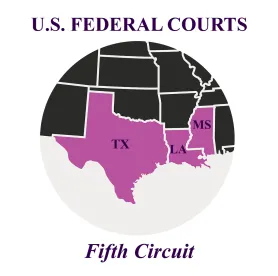On February 23, 2022, the U.S. District Court for the Eastern District of Texas struck down the part of the interagency interim final rule implementing the “independent dispute resolution” (IDR) procedures created by the No Surprises Act, which took effect for calendar-year plans on January 1, 2022 (Texas Medical Association v. U.S. Department of Health and Human Services). Though the bulk of the rule remains in effect, the changes will impact health plans and the employers that sponsor them.
Background
The Consolidated Appropriations Act, 2021, which was enacted in December 2020, included the No Surprises Act, which lawmakers drafted with the goal of protecting health plan participants from “surprise medical bills”—large, unexpected medical bills from out-of-network healthcare providers. The act limits the amount a plan participant may be charged for three types of services: out-of-network emergency services, nonemergency services from out-of-network providers at in-network facilities, and out-of-network air ambulance services. The act provides for an IDR process by which plans and providers must resolve any disagreements about how much the plan should pay the provider for these services. This IDR process is the subject of the new federal court ruling.
The act specifically lays out some (but not all) IDR procedures and requirements. It mandates “baseball arbitration,” in which each side presents the arbitrator with the amount it thinks the plan should pay the provider, and the arbitrator must select one proposal or the other. The arbitrator’s decision is binding and not subject to review by a court.
The act identifies various considerations the arbitrator must take into account. One of them, which is central to the court’s ruling, is what the act calls the “qualifying payment amount” (QPA). As the court described it, “the QPA is typically the median rate the insurer would have paid for the service if provided by an in-network provider or facility.”
The act instructed the U.S. Departments of Health and Human Services, Labor, and the Treasury to issue regulations that, among other things, implement the act’s IDR process. The departments published that guidance as an interim final rule in two parts, the first in July 2021 and the second in October 2021. Part II of the rule requires that an IDR arbitrator select the proposed payment amount closest to the QPA unless certain conditions are met. In other words, as the court explained, the rule “effectively creates a ‘rebuttable presumption’ that the amount closest to the QPA is the proper payment amount.”
The Lawsuit and Ruling
In general, insurers were happy with the rule’s rebuttable presumption favoring the QPA, but providers were not. Several medical associations and physicians initiated litigation to try to block the rule. In the Texas lawsuit, the Texas Medical Association and one of its physician members (collectively, the “Texas Medical Association”) asked the court to vacate the part of the rule establishing the rebuttable presumption.
According to the Texas Medical Association, the departments exceeded their authority in creating the presumption. The court agreed. It reasoned that the act does not state that the QPA is the most important consideration for an arbitrator selecting a payment amount, but the rule “places its thumb on the scale for the QPA, requiring arbitrators to presume the correctness of the QPA.” The Texas Medical Association also argued that the departments violated federal law by failing to allow for public notice and comment before issuing the rule. Again, the court agreed. The court therefore vacated the part of the rule establishing that presumption, but it left the rest of the rule intact.
This ruling has potentially broad implications because it calls the legitimacy of the entire rule into serious doubt. However, the Texas Medical Association asked the court to block only the part of the rule dealing with the rebuttable presumption in favor of the QPA, and that is all the Texas court did.
The Departments’ Response
On February 28, 2022, the Employee Benefits Security Administration issued a memorandum in response to the ruling. It said the departments are “considering next steps” and are also taking steps “to conform to the court’s order.” The departments have withdrawn guidance based on or referring to the invalidated parts of the rule, and they will provide training on the revised guidance for arbitrators. They will also open the new IDR portal, through which parties with disputes under the act can initiate the IDR process.
Takeaways for Health Plan Sponsors
The rule’s presumption favoring the QPA was widely seen as a win for insurers and health plans. Because the QPA is generally the median amount insurers would have paid for a particular service if provided by an in-network provider, insurers had a measure of control over the QPA. Insurers asserted that the presumption would keep healthcare prices in check. Providers argued it would depress payments to providers below fair market value. Both sides seem to agree that eliminating the presumption will likely increase, on average, the amount insurers and plans will have to pay providers in the IDR process.
Additionally, the QPA presumption created a reasonably straightforward process for arbitrators to select between competing payment proposals. Now, arbitrators have little guidance on how to weigh competing factors for and against payment proposals, so plans and providers will have a harder time predicting what arbitrators will do. In general, parties are less likely to settle disputes if they cannot predict outcomes, which means more disputes may proceed all the way through arbitration than would have in the absence of the court’s ruling.
The court’s opinion is likely not the end of the line. The departments may appeal, and they may engage in more rulemaking.





 />i
/>i

